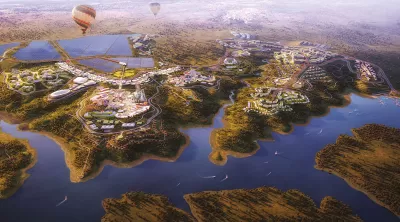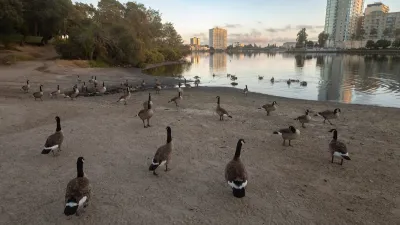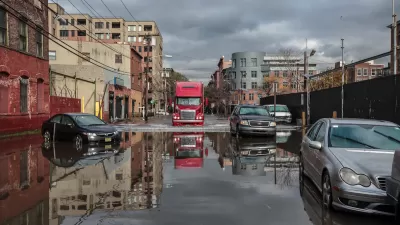The development proposes a from-scratch sustainable community built on brand new land at the edge of a reservoir.

In the tradition of built-from-scratch ‘cities,’ a new development in Spain purports to be Europe’s first foray into the literal construction of new land on the edge of a reservoir, reports Elissaveta M. Brandon in Fast Company.
Elysium City, as it is called, is billed as Europe’s first circular city to be built from the ground up, following a masterplan by global architecture firm Gensler. It will span 2,900 acres (about 4.5 square miles) and is expected to be completed in 20 years, with the first phase opening in about 5.
The article notes the similarities to Saudi Arabi’s Neom. “Both are described as sustainable havens with solar farms, a rail network, and electric vehicles.” However, Brandon explains that Elysium could avoid some of the pitfalls of Neom. For one, “It promises to work with nature, not against it.”
Originally conceived as a glittering luxury gambling haven—“Eurovegas”—the project was reimagined after the Covid-19 pandemic as a solar-powered, all-electric, sustainable community. But “construction is set to begin on the most economically profitable district of them all—entertainment—because [developer Francisco Nuchera] faced pressured from the local government to create jobs.” This means “the city will most likely look like Eurovegas before it looks like Elysium.”
FULL STORY: Spain is building a city from scratch. Can it avoid the mistakes of Saudi Arabia’s line-shaped metropolis?

Trump Administration Could Effectively End Housing Voucher Program
Federal officials are eyeing major cuts to the Section 8 program that helps millions of low-income households pay rent.

Planetizen Federal Action Tracker
A weekly monitor of how Trump’s orders and actions are impacting planners and planning in America.

Ken Jennings Launches Transit Web Series
The Jeopardy champ wants you to ride public transit.

California Invests Additional $5M in Electric School Buses
The state wants to electrify all of its school bus fleets by 2035.

Austin Launches $2M Homelessness Prevention Fund
A new grant program from the city’s Homeless Strategy Office will fund rental assistance and supportive services.

Alabama School Forestry Initiative Brings Trees to Schoolyards
Trees can improve physical and mental health for students and commnity members.
Urban Design for Planners 1: Software Tools
This six-course series explores essential urban design concepts using open source software and equips planners with the tools they need to participate fully in the urban design process.
Planning for Universal Design
Learn the tools for implementing Universal Design in planning regulations.
Ada County Highway District
Clanton & Associates, Inc.
Jessamine County Fiscal Court
Institute for Housing and Urban Development Studies (IHS)
City of Grandview
Harvard GSD Executive Education
Toledo-Lucas County Plan Commissions
Salt Lake City
NYU Wagner Graduate School of Public Service




























